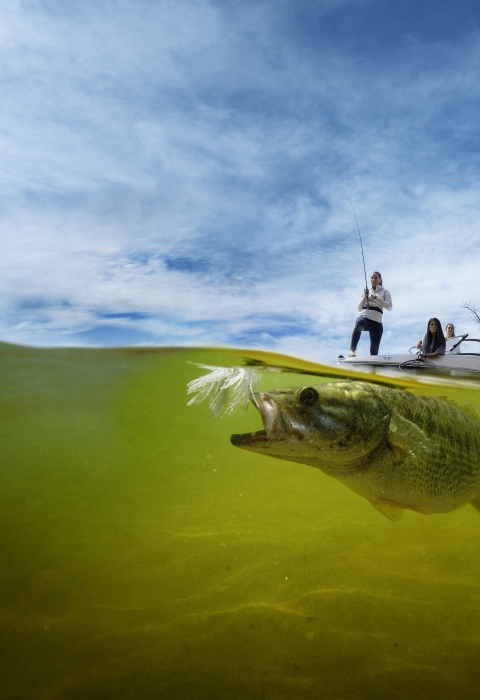

You’ll find everything you need at a fishing tackle or sporting goods store. While you’re in the store, pick up a copy of your state’s fishing laws (or regulations), which will tell you the types of fish, the minimum size limit, and the number of fish you can catch in one day.
PRO-TIP: Some libraries, state agencies, national fish hatcheries, and national wildlife refuges even offer tackle loaner programs for families and beginning anglers. Call around in your area to see what’s available!
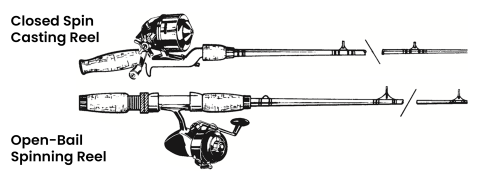
Many outdoor retailers sell kits that include everything you need (and a special excise tax ensures that a portion of the sales gets funneled back into conservation!) Choose a fishing rod that you can hold comfortably in one hand. Two of the most common used for beginners are a closed spin casting reel and an open-bail spinning reel.
Closed Spin-Casting Reels use a rod with a pistol-like grip and a reel that’s mounted on the top of the rod’s handle. Line is released using a push button on the reel. This is the easiest rod and reel for beginners.
Open-Bail Spinning Reels use a rod with a straight handle and a reel that’s mounted under the handle. Line is released using your index finger.
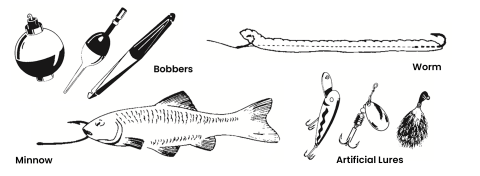
Now you are ready to set up your rod with hook, line, and sinker.
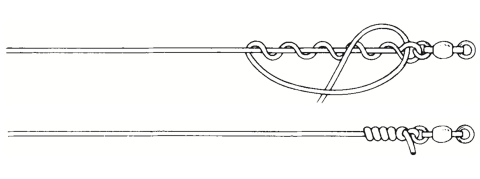
Step 1: Pass line through the hook eye and, with the loose end, make 5 turns around the standing line. Insert the loose end of the line between the eye and the first loop formed.
Step 2: Bring the loose end through the large second loop formed. Wet the line and tighten the knot slowly.
Once you’ve picked out all your gear, it’s time to practice. To practice your cast, remove the hook and tie on an rubber weight called a casting plug. Next, find an open area away from other people where you can practice casting.
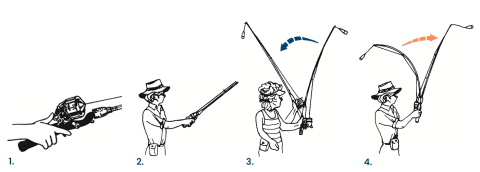
A closed spin-casting reel has a button that you push with your thumb to release the line.
With an open-bail spinning reel, you use your finger to release the line.
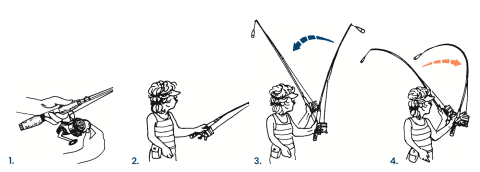
How did you do? If the plug landed close in front of you, you released the line too late. If the plug went more or less straight up, you released the line too soon.
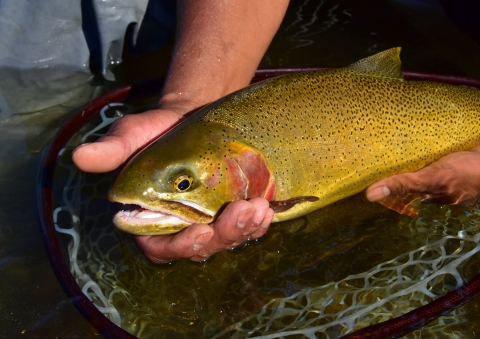
Respecting the catch is an important conservation ethic. Fish should never be wasted. If you catch a fish that is under the legal or minimum size or that you do not want to keep, release it quickly. Here are three tips to make sure the fish you release has the best chance at surviving.
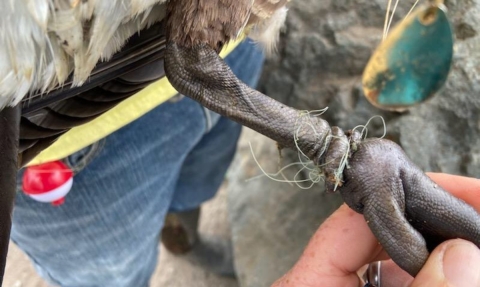
A good angler respects our natural resources and wants to conserve them for others to enjoy. Always carry out what you brought in and never leave behind plastic containers or packaging. Fishing line is very dangerous to birds and other wildlife, so pick up and recycle. To protect the water from invasive species invasive species
An invasive species is any plant or animal that has spread or been introduced into a new area where they are, or could, cause harm to the environment, economy, or human, animal, or plant health. Their unwelcome presence can destroy ecosystems and cost millions of dollars.
Learn more about invasive species , never move fish or plants from one water body to another or release unused live bait into the water.
Look for a weedy or rocky area where the water is several feet deep. Look for areas where the bottom changes in some way — from sand to gravel or from sand to mud. Stay quiet and avoid disturbing the water or you may scare fish away. Cast the bait as far from shore as you can and watch the bobber. When a fish has the bait, it will probably try to swim away, pulling the bobber under the water. When that happens, raise the tip of the rod quickly to set the hook and reel your catch in.